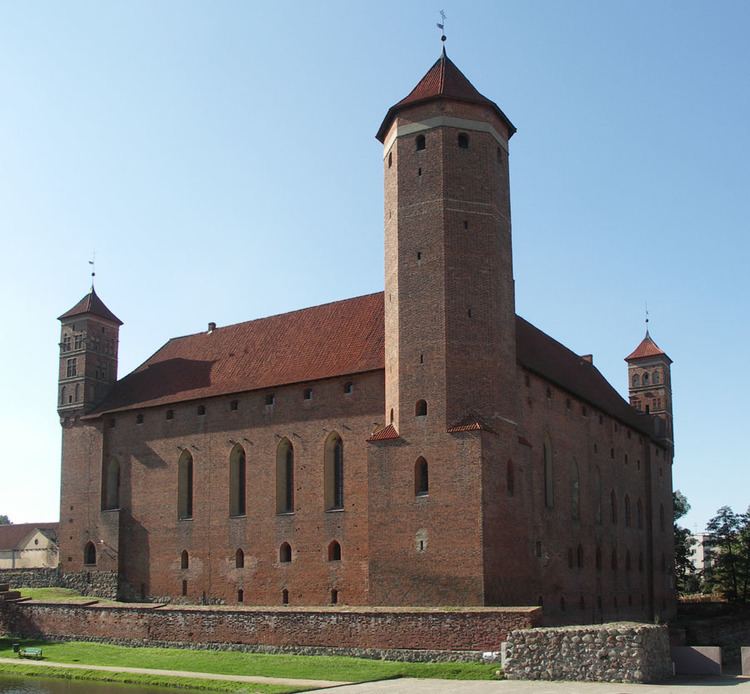Built 1350-1401 Architectural style Gothic architecture | Phone +48 89 767 21 11 | |
 | ||
Location Lidzbark Warmiński, Warmian-Masurian Voivodeship, in Poland Address Krótka 1, 11-100 Lidzbark Warmiński, Poland Hours Closed today MondayClosedTuesday10AM–6PMWednesday9AM–6PMThursday9AM–5PMFriday9AM–5PMSaturday9AM–5PMSunday9AM–5PM Similar Museum für Ermland und Masu, Castle of Warmian Bishops i, Reszel Castle, Burg Rastenburg, Upper Gate in the Old Town | ||
Castle of Warmian Bishops in Lidzbark Warmiński - a castle from the fourteenth century located in Lidzbark Warmiński, belonging to Poland's most precious Gothic architectural style buildings. The castle is located in Lidzbark Warmiński (48 km north of Olsztyn, Warmian-Masurian Voivodeship; in Poland.
Contents
Description
A palatial stronghold located in Lidzbark Warmiński - which for centuries was the largest town in Warmia, located by the estuary of the river Symsarna with the river Łyna. The stronghold is encircled by a defensive moat. An additional "dry moat" encircled the local living quarters located close to the stronghold - all of the defensive structures survive except the northern-moat, where the castle's windmill was once located. The castle was built on a plan of a square formation, with 48,5 metre long walls. A fourteen level tower is located in the north-east wing of the castle. The lower part of the tower, built in a square structure has posterns - while the upper part of the tower is octagonal. The other four corners of the castle have small square decorational towers, whose design changed throughout the centuries. The castle courtyard is made up of two levels - both with cloisters; these are the only historical cloisters in Poland which have not architecturally changed. The stronghold has aspects relating to the Teutonic Order, whose architectural style can be both seen in the castle's courtyard but also traced in the representative level of the castle in: the chapel; the small and big refectory; in the capitulary; common hall; and in the bishops' chambers. The castle serves as one of the main attractions of the town and regularly hosts cabaret events in the Autumn months. http://www.staypoland.com/about_lidzbark_warminski.htm
History
The castle was built between 1350-1401 as the seat of the Warmian bishops, later going into the hands of the Teutonic Order. The Teutonic Knights lost the castle in 1466, after the Second Peace of Toruń - the fortress was part of the Polish-Lithuanian Commonwealth up until 1795 (after the Third Partition of Poland; where behind the castle walls artistic life thrived. In 1794, Ignacy Krasicki, the last residing bishop, left the castle. His successors - bishops Karol and Józef Hohenzollern - moved to Oliwa. In 1963, the castle became the premises of the Branch of the Museum of Warmia and Masuria in Olsztyn.
